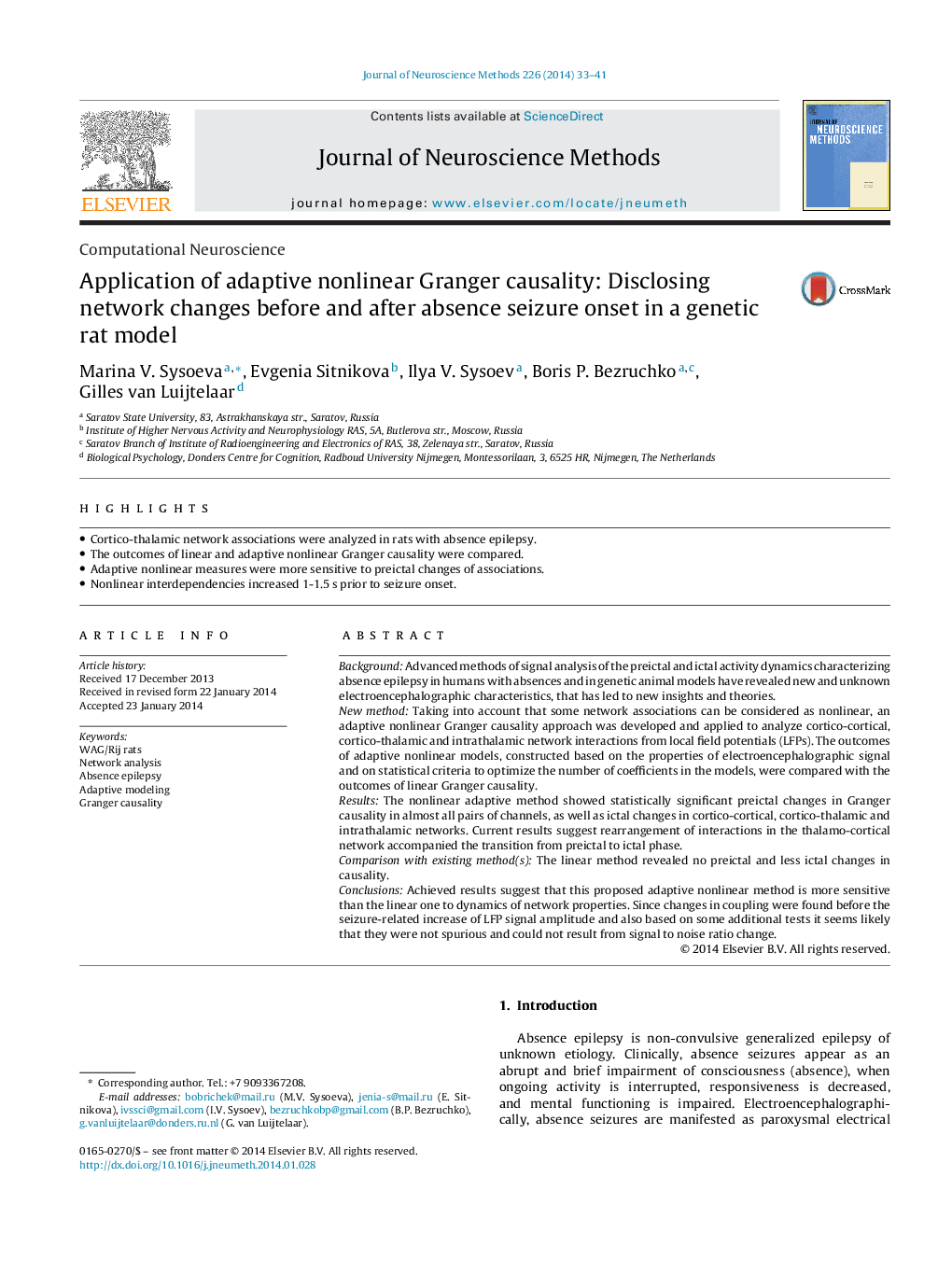| Article ID | Journal | Published Year | Pages | File Type |
|---|---|---|---|---|
| 6268853 | Journal of Neuroscience Methods | 2014 | 9 Pages |
â¢Cortico-thalamic network associations were analyzed in rats with absence epilepsy.â¢The outcomes of linear and adaptive nonlinear Granger causality were compared.â¢Adaptive nonlinear measures were more sensitive to preictal changes of associations.â¢Nonlinear interdependencies increased 1-1.5 s prior to seizure onset.
BackgroundAdvanced methods of signal analysis of the preictal and ictal activity dynamics characterizing absence epilepsy in humans with absences and in genetic animal models have revealed new and unknown electroencephalographic characteristics, that has led to new insights and theories.New methodTaking into account that some network associations can be considered as nonlinear, an adaptive nonlinear Granger causality approach was developed and applied to analyze cortico-cortical, cortico-thalamic and intrathalamic network interactions from local field potentials (LFPs). The outcomes of adaptive nonlinear models, constructed based on the properties of electroencephalographic signal and on statistical criteria to optimize the number of coefficients in the models, were compared with the outcomes of linear Granger causality.ResultsThe nonlinear adaptive method showed statistically significant preictal changes in Granger causality in almost all pairs of channels, as well as ictal changes in cortico-cortical, cortico-thalamic and intrathalamic networks. Current results suggest rearrangement of interactions in the thalamo-cortical network accompanied the transition from preictal to ictal phase.Comparison with existing method(s)The linear method revealed no preictal and less ictal changes in causality.ConclusionsAchieved results suggest that this proposed adaptive nonlinear method is more sensitive than the linear one to dynamics of network properties. Since changes in coupling were found before the seizure-related increase of LFP signal amplitude and also based on some additional tests it seems likely that they were not spurious and could not result from signal to noise ratio change.
